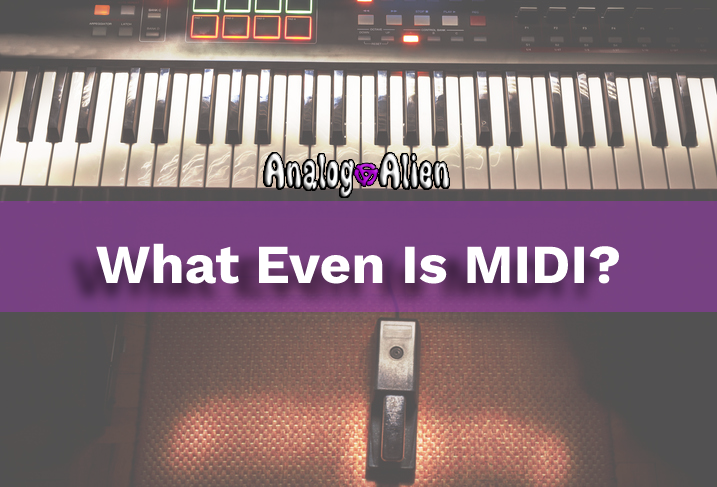So you’re very happy with your board. It sounds great. You think to yourself, “I’m going to share this beauty with some like-minded people”. Upon wandering into some Facebook groups and forums you see pedalboards which may look more at home within the walls of NASA, and everyone is talking about MIDI …. ”What’s going on here!?” you ask.
Do not fear fair traveler. You have stumbled upon our MIDI Guide For Dummies. Allow us to guide you.
Brief History
MIDI started off as a mechanism within keyboards in the 80’s, designed to link multiple keyboards/synths up together. This also allowed one of the units to make changes to the others. The 5 pin din plug midi very effectively lent itself to the 80’s synth movement, giving way to bands such as the mighty Depeche Mode.
What Does MIDI do?
Very simply, it sends messages. The gear which receives the messages are normally pre-programmed by the manufacturer (and sometimes you) to react in specific ways when specific messages are received.
A simple use for this can be On/Off, which may seem pointless at first but if you have several pedals you wish to turn On or Off all at the same moment, a single press from a midi controller can do this easily. We’ve all done crazy tap dancing during a song in order to turn several pedals On/Off during a change in a song. Well, this easily solves that issue.
Another simple use would be to change a preset of a pedal (or even multiple pedals) with one foot press. This requires us to set up a PC (Program Change) message and often is as simple as PC 1 = preset 1 and so on.
CC (Continuous Control) messages can, for example, change the position of a knob. For example, with a Chorus Pedal, if the Rate control’s CC number is CC 5 we can use this to have different settings, with the Rate set high, low, medium – wherever you like just from a single push. For example, we would do this by setting CC5 at 50 to have the Rate halfway up.
Also, by using CC linked to an expression pedal we can control any of the knobs – like we would with a wah pedal. AND what’s more, we can control multiple knobs on one or even multiple pedals at the same time.
We can also make this different for each midi controller preset. On one preset you may have reverb and tremolo both blend into the mix as you push an expression pedal toe down.
On the next preset you may have more drive on heel down and less on toe down but also add some chorus to the clean toe down position.
This can also lead to some great “in-between” tones.
So you’re likely starting to understand that MIDI is about widening your ability to express yourself further by expanding your control over your gear.
However, there is a dark side to midi. It can take away from your creativity. It’s not uncommon for people to spend more time focusing on midi mapping/programming than they do on writing songs.
But once you get the hang of a good midi setup, you can turn a small pedalboard into a huge number of sounds that are all unique to you.

